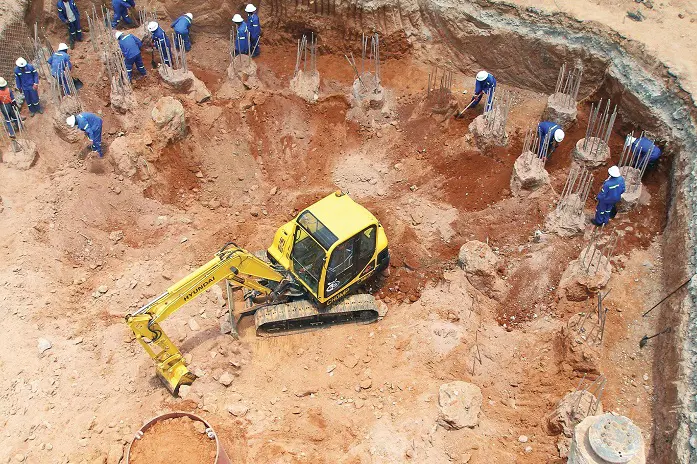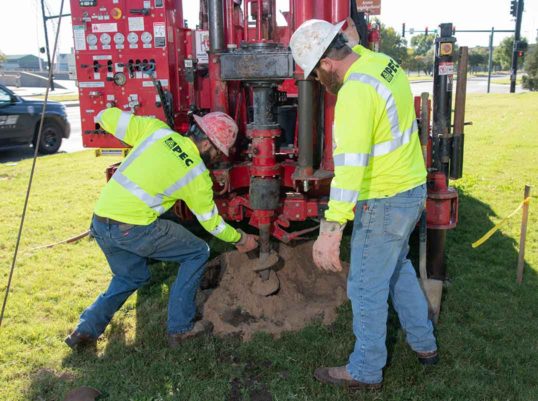The Effect of New Technologies on the Geotechnical Industry
Wiki Article
An In-Depth Consider the Extent of Practice for Geotechnical Engineers and Their Effect On Project Expediency and Threat Mitigation
The extent of method for geotechnical engineers includes a range of important duties that straight influence job feasibility and threat administration. From performing comprehensive site investigations to analyzing subsurface conditions, their know-how is important fit foundation layout and building techniques. As projects progressively experience complex geological difficulties, comprehending the nuanced duty of these professionals becomes vital for ensuring effective results. The ramifications of their job extend beyond mere analysis; they can substantially change the trajectory of a job. What specific strategies do geotechnical engineers use to browse these complexities successfully?Roles and Duties of Geotechnical Engineers
Geotechnical engineers play an important role in the structure of building and construction tasks, ensuring that frameworks are developed on strong ground. Geotechnical designers conduct site examinations to gather important data pertaining to subsurface conditions.
Partnership is additionally a crucial facet of their duty; they function closely with civil designers, engineers, and ecological experts to make certain that geotechnical factors to consider are incorporated right into total task preparation. Ultimately, the proficiency of geotechnical designers is important in promoting the safety, sustainability, and practicality of building and construction ventures.
Trick Locations of Geotechnical Analysis
Soil examples and geological studies are foundational aspects in the crucial areas of geotechnical analysis. These activities give important information relating to the chemical and physical residential properties of the subsurface materials, allowing engineers to assess site problems properly. The evaluation generally incorporates dirt category, compaction, shear strength, and permeability, every one of which are necessary for understanding the actions of soils under different loading conditions.Another significant location of emphasis is slope stability analysis, which assesses the danger of landslides or dirt disintegration. This involves evaluating the geometry of slopes, soil kinds, and groundwater problems. Website characterization is also vital, as it entails an extensive investigation of the site's background, including previous building and construction, contamination, and natural dangers.
Furthermore, groundwater evaluation plays an important function in geotechnical analysis, affecting both the design and building and construction phases. Recognizing the groundwater table, flow direction, and potential changes is important for reliable foundation style and stormwater monitoring.
With each other, these essential areas of geotechnical evaluation develop a comprehensive structure that notifies decision-making processes, making sure risk-free and lasting design practices while reducing potential risks associated with subsurface conditions.
Impact on Project Expediency
The expediency of a building and construction project hinges dramatically on the understandings gained from geotechnical investigations. These examinations offer vital information concerning dirt properties, groundwater problems, and subsurface qualities, which are important for identifying the suitability of a website for building and construction. By examining variables such as dirt bearing ability, negotiation possibility, and slope stability, geotechnical designers play a crucial duty in assessing whether a job can proceed as prepared or if modifications are required.Moreover, the results of geotechnical researches straight affect task design and construction methodologies. Accurate geotechnical information permits notified decision-making, ensuring that structural layouts suit site-specific problems and abide with regulatory requirements. This process aids in optimizing source allowance, consequently reducing unexpected hold-ups and price overruns.
Additionally, a comprehensive geotechnical analysis enhances the total viability of a job by recognizing prospective obstacles early in the preparation phase. By resolving these challenges proactively, stakeholders can improve the project's chance of success, making sure that it fulfills both monetary and practical objectives. In recap, the payments of geotechnical engineers are essential to developing job usefulness, thereby preparing for efficient job execution.
Risk Mitigation Approaches
While building and construction tasks inherently geotechnical eng entail numerous unpredictabilities, applying effective threat mitigation techniques can considerably decrease possible concerns developing from geotechnical aspects. Geotechnical designers play a crucial duty in determining, assessing, and attending to risks related to subsurface problems, guaranteeing that jobs continue smoothly and stay within budget plan.One primary method entails thorough website investigations, that include soil tasting, in-situ testing, and lab analysis. These evaluations supply crucial information on dirt strength, habits, and composition, allowing engineers to design structures and earthworks that are both safe and reliable. Using innovative modeling techniques, such as finite component analysis, permits engineers to forecast exactly how dirt and structural communications might develop under different loading conditions.
An additional effective reduction technique is the implementation of appropriate layout modifications, such as using support strategies or taking on alternate building methods, which can boost stability and lower vulnerability to geotechnical problems. In addition, continuous monitoring of website conditions throughout building can help with prompt treatments, thus lessening the likelihood of unanticipated difficulties.
Study and Real-World Applications
Study give valuable insights into the functional applications of geotechnical design principles and highlight the efficiency of threat mitigation strategies in real-world scenarios. One notable example is the construction of the Millennium Dome in London, where innovative ground therapy techniques were applied to address difficult dirt problems. By employing deep cement mixing and soil stablizing methods, designers successfully produced a secure structure that minimized prospective negotiation risks, guaranteeing the job's expediency.One more situation is the stabilization of the hillside for the brand-new freeway in California, where substantial slope analysis and monitoring were used. Geotechnical designers used retaining wall surfaces and drain systems to take care of groundwater, significantly reducing the danger of landslides. This proactive strategy not only preserved the stability of the freeway yet likewise improved public safety and security.
Furthermore, the expansion of a significant airport incurable showed the relevance of comprehensive site examinations. geotechnical eng. Geotechnical designers recognized bothersome dirt layers and advised particular structure styles, bring about an effective project conclusion with minimized delays. These study highlight the critical role that geotechnical designers play in examining dangers and implementing effective services, therefore boosting task feasibility and overall success
Verdict

By evaluating elements such as dirt bearing capacity, negotiation potential, and slope stability, geotechnical designers play an essential function in assessing whether a job can continue as intended or if alterations are essential.
In recap, the contributions of geotechnical engineers are integral to establishing job expediency, consequently laying the groundwork for effective task implementation.
Geotechnical designers identified problematic dirt layers and suggested certain foundation styles, leading to a successful task conclusion with decreased hold-ups. geo tech engineering. These instance research studies emphasize the important role that geotechnical engineers play in evaluating risks and executing reliable services, therefore boosting job feasibility and total success
With effective risk mitigation techniques and the application of advanced modeling techniques, geotechnical engineers boost project results and decrease hazards connected to dirt and groundwater conditions.
Report this wiki page